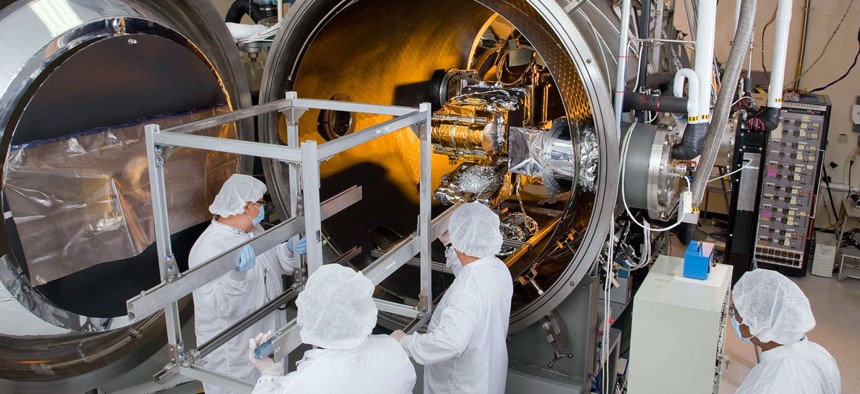Tech Giants Team Up to Unleash NOAA’s Data

Engineers work on the CERES Instrument which will be integrated onto the Joint Polar Satellite System spacecraft, scheduled for launch in early 2017. NOAA
NOAA will partner with major cloud computing providers to explore ways the agency might better unleash its vast environmental data stores for the public good.
Just over a year ago, the National Oceanic and Atmospheric Administration sought industry feedback to help it better share the more than 20 terabytes of weather data it produces every day.
Today, Commerce Secretary Penny Pritzker revealed the culmination of NOAA’s efforts: a big data project between NOAA and a handful of tech giants.
NOAA will partner with major cloud computing providers Amazon Web Services, Google Cloud Platform, IBM, Microsoft and the Open Cloud Consortium to explore ways the agency might better unleash its vast environmental data stores for the public good.
The individual collaborations between the companies and NOAA will be established through cooperative research and development agreements. These agreements provide the framework for each data alliance between the companies and NOAA.
According to a Commerce statement, the data alliances “will work to research and test solutions for bringing NOAA’s vast information to the cloud, where both the public and industry can easily and equally access, explore and create new products from it, fostering new ideas and spurring economic growth.”
It’s clear NOAA wants to better share the data it produces, but it wants to do so without spending additional taxpayer dollars. That’s been its goal since former Chief Information Officer Joe Klimavicz (now at the Justice Department) told me last year that NOAA wanted all its information available in the cloud and “extracted free of charge in its native form.”
Demand for NOAA’s data will only increase in the coming years, too. NOAA is already a huge data producer, but two of its new weather satellite programs will make today’s data production look like a trickle when they come online.
The first Geostationary Operational Environmental Satellite, scheduled to launch in early 2016, will produce 40 megabytes of data per second, four times more data than today’s geostationary satellites. The first Joint Polar Satellite System will launch sometime in 2017. At full operational capacity, it will produce about 6 megabytes of weather data per second.



